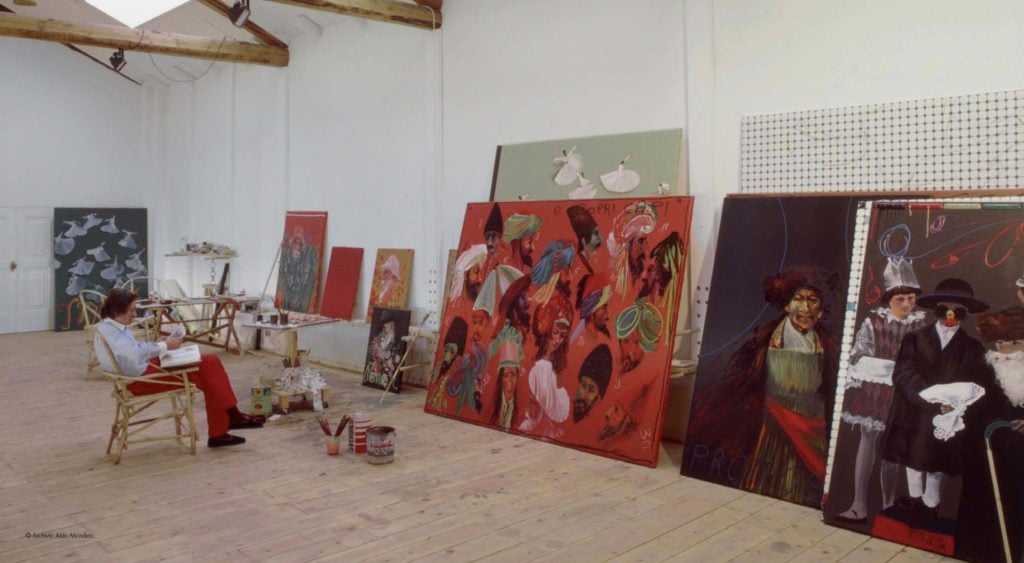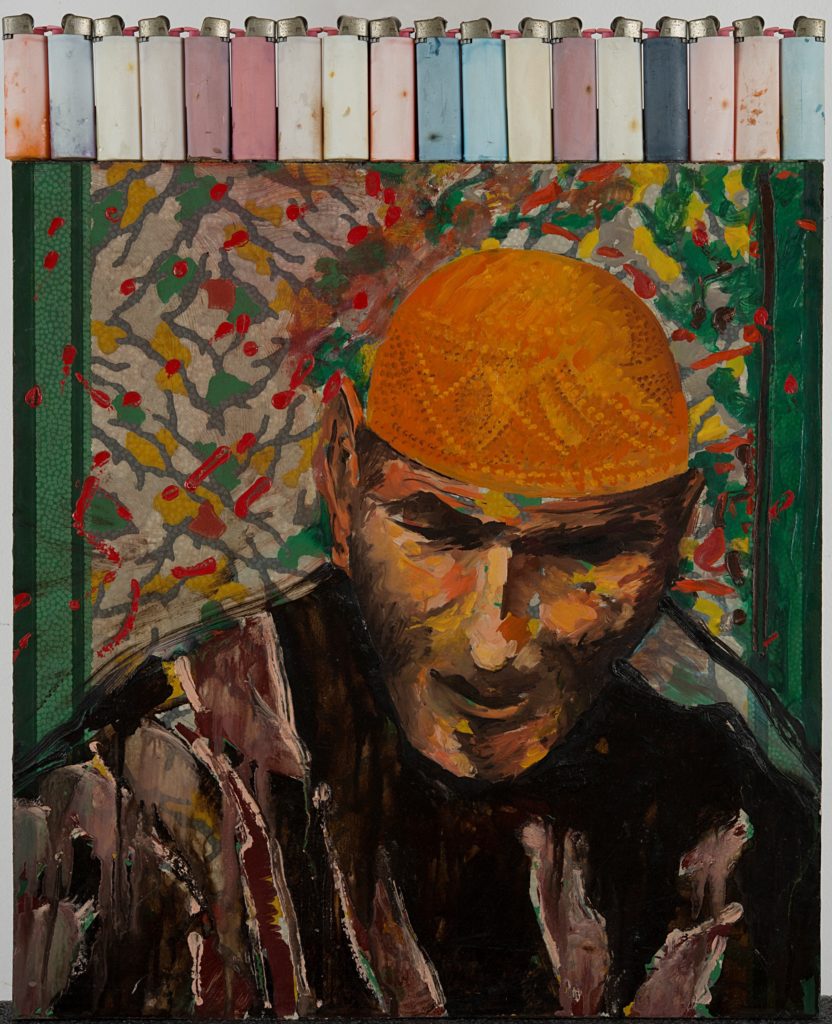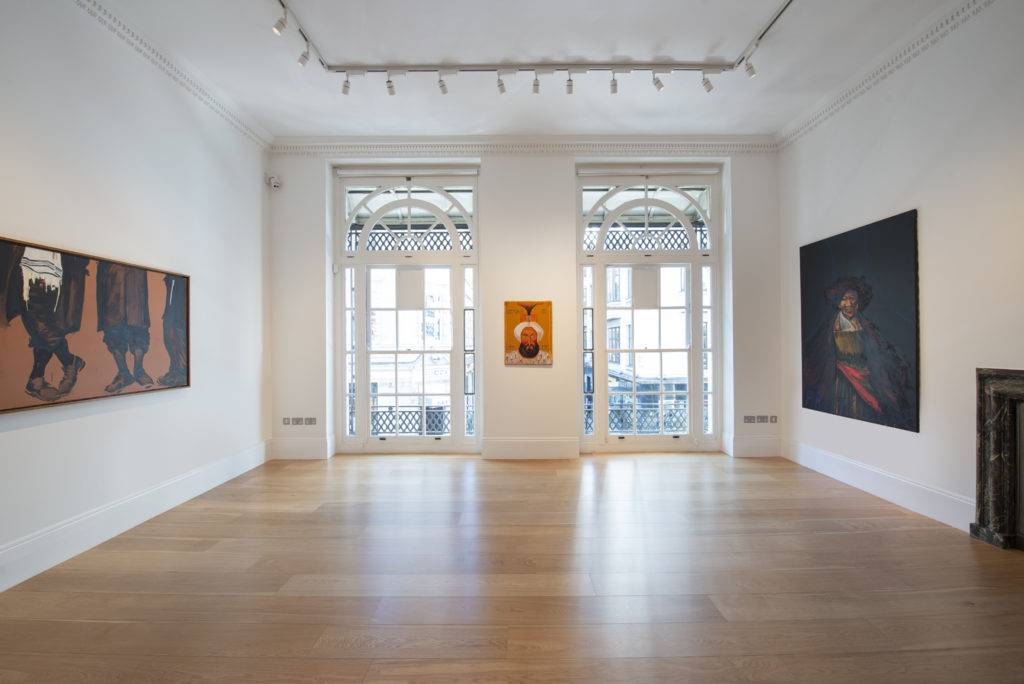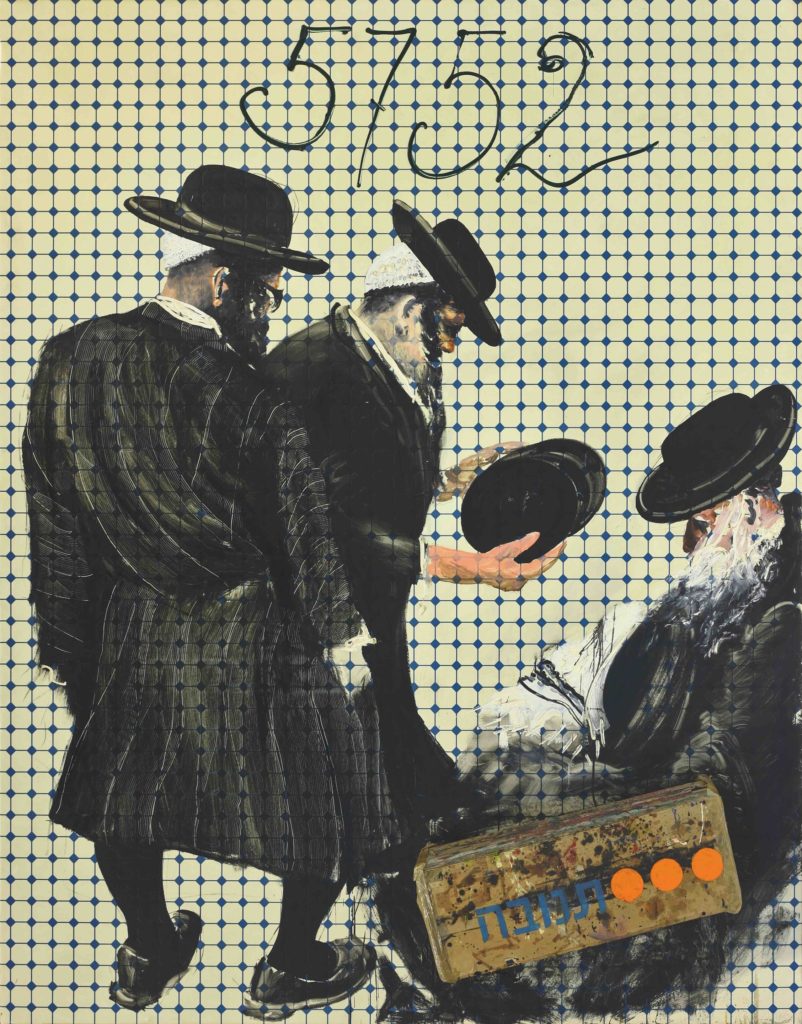M&L Fine Art Revives Aldo Mondino’s Legacy With an Exhibition of His Playful Linoleum Paintings


Artnet Gallery Network

In their rejection of old fashioned art institutions and conventions, many of the Italian Arte Povera artists eschewed traditional materials for everyday objects: things like aluminum, concrete, soil, tree branches. And linoleum. The latter was a favorite material of Aldo Mondino, a mercurial artist associated with this group who, in the mid-1980s, turned to linoleum for a series of paintings that became his last major body of work.
On view now at M&L Fine Art in London is an exhibition of these paintings, titled “Aldo Mondino: Linoleum,” which is also the first solo show of the artist’s work in the UK since 1992.
Mondino was born in Turin in 1938. Against his father’s wishes, he moved to Paris in the late 1950s and began his art career, ingratiating himself into a circle of experimental artists that included Roberto Matta, Wifredo Lam, and Méret Oppenheim. Returning to Italy years later, he began incorporating organic materials into his work. He first employed linoleum after passing by a carpenter’s showroom in Milan. For him, the attraction was as much material as it was based in language and humor. He liked the idea of using a modern material with a name that was, in a sense, a play on “linen” and “oil,” two of the most traditional painting media.

Aldo Mondino, Ritratto (1986). Courtesy of M&L Fine Art.
“The contrast between linoleum’s modesty and the rich, painterly subject matter of Mondino’s compositions is extraordinary,” says Pietro Pantalani, a representative of M&L and an expert on the artist. “Also, in keeping with Mondino’s interest in Middle Eastern culture, it’s possible to read, within the geometric patterns of certain linoleum sheets used by Mondino, an indirect citation of the decorative lexicon of many art forms from that region, including calligraphy and Maiolica. Mondino’s art is replete with direct and indirect citations, and the flexibility with which he adopted linoleum to this end is fascinating.”
Though he was a contemporary of the Arte Povera artists, and shared many of their sensibilties, Mondino didn’t consider himself a part of the movement. In fact, he didn’t consider himself a part of any movement—a product of the rogue spirit that made him a great artist but also, perhaps, prevented him from gaining the international recognition that his Italian contemporaries garnered.

Installation view of “Aldo Mondino: Linoleum,” 2019. Courtesy of M&L Fine Art.
“If I had to speculate on the reasons for Mondino’s relative obscurity, I would definitely point to his irregular market and the idiosyncratic nature of his practice,” Pantalani says. “Compared to many of his contemporaries, who worked consistently and at length on a recognizable body of work, Mondino’s oeuvre features much more extreme variations of style and subject matter. From the early paintings, he moved on to sculpture, mosaic, and even performance pieces, each with an individual and unique formal and iconographic syntax. This made it more difficult for critics and collectors to follow his work.”
Mondino may have been overlooked , but Pantalani and gallery believe that’s about to change. The timing seems right. From a market perspective, work by Arte Povera artists is more desirable than it’s ever been. Culturally, Mondino’s work also feels particular well suited for today’s globalist landscape.

Aldo Mondino, 5752 (1991). Courtesy of M&L Fine Art.
“Aldo Mondino’s works on linoleum, so strongly defined by his critical research of Orientalist themes, in addition to the artist’s own Jewish heritage, would benefit greatly from gaining exposure to the diverse audience of London’s art circles,” Pantalani says. “As a historic melting pot for a number of North Arican and Middle Eastern communities of diverse religions and cultural heritages, London has produced generations of artists who have explored the same themes as Mondino in their work, and it continues do so now today.”
“Aldo Mondino: Linoleum” is on view at M&L Fine Art through March 22, 2019. Following the presentation at M&L, the exhibition will travel to Matteo Lampertico and Galleria Gracis in Milan.